EPISODE 7: Innovative Transformations for Assuring American Healthcare Equity, featuring Dora Hughes and Purva Rawal, CMS Innovation Center
“We feel very strongly that building a health system that achieves equitable outcomes through high-quality, affordable, person-centered care will require addressing the full range of patients’ needs including: their chronic disease, episodic, or other specialized care needs.”
— Dora Hughes, Chief Medical Officer for the CMS Innovation Center
Host Aparna Higgins, LAN Senior Advisor and Senior Policy Fellow at the Duke Margolis Center for Health Policy, interviews Chief Medical Officer of the CMS Innovation Center, Dora Hughes, and Chief Strategy Officer of the CMS Innovation Center, Purva Rawal. In this episode, Dora and Purva share how the CMS Innovation Center is approaching specialty care. They discuss insightful information including the strategic objectives for improving access to high quality care and the critical elements of integrating specialty care into the future of APMs.
Episode Q & A
We all know that the Innovation Center strategy refresh really reaffirmed the importance of advanced primary care and accountable care models; and the center's goal is to have every Medicare fee for service beneficiary in an accountable care relationship by 2030. Could talk a little bit about how the center plans to approach specialty care in future model development to achieve the goals from the recent CMMI strategy refresh; and the 2030 vision for accountable care?
Purva Rawal: We’re a year into the strategy refresh. I think we’re in a really great place where we’ve been able to lay a lot of groundwork for the new strategic direction, and we’ve been doing a lot of thinking about how we want to approach specialty care in our future models. And so, I’ll just take a step back and talk a little bit about our strategic objectives; and I think as I talk about them, it’ll be clear how specialty care is crosscutting, and we really have to have a strong focus on specialty care in order to achieve these objectives. So last year, CMS set out a vision to advance health equity, to expand coverage, and improve health outcomes. And to support this vision, the Innovation Center launched its, as I said, strategic refresh in October of 2021; and really led with five objectives.
The first was to drive accountable care; the second was to advance health equity; the third is to support care innovations; the fourth is to address affordability; and the final objective is to partner to achieve system transformation, where the LAN especially has been a critical partner. And so when you take a step back none of these objectives stand alone. They’re really infused across all of our work and model development. So, I’m going to talk about each one briefly because I think that might help illustrate why and how we’re taking a comprehensive approach to specialty care in our work at the Innovation Center. So, it’s not just an individual model, but how does this cut across all of our work and thinking? So, as I said, I’ll start with driving accountable care. And as part of our strategy refresh, as you said Aparna, we set a bold goal to have our beneficiaries in longitudinal accountable care relationships by 2030, where providers are accountable for the quality and the total cost of their care.
So, when we take a step back, we think about how beneficiaries might experience this. They’re likely to experience accountable care relationships, mostly through advanced primary care, or ACOs, accountable care organizations, and those entities are then expected to coordinate with, or fully integrate, hopefully, with specialty care to deliver that whole person care. And so, if we want beneficiaries to have their full range of needs met, all the way from vaccines and preventive services to specialty care needs for patients or beneficiaries with congestive heart failure or COPD. If we want all of those needs to be met, then primary and specialty care have to be working together to coordinate across that care journey. So really, when we’re talking about accountable care, it’s really bringing primary and specialty care together. Our second objective is to advance health equity. We know that there are significant disparities and healthcare access and outcomes, especially among underserved populations.
And so, to advance equity, we have to test ways to increase access to high quality specialty care that then helps to improve overall health outcomes and to close those disparities. The third objective is, as I said, was to support care innovations. And here, this is actually an area where we’ve done a lot of discussion and speaking with members of the LAN. Here, we’re really considering the role of data, and other supports, that can provide an increased access to high quality specialty care; and to enable that more integrated person-centered care delivery, that I think we’re all driving towards. Access to data that kind of enables communication across primary and specialty care, and that’s available at the point of care, is critical. And that’s really some of the work that sits under that objective. And then our fourth objective is to address affordability and improving access.
We know that improving access to high quality specialty care that patients receive at the right time and in the right place can help improve the over overall affordability of care for individuals and families. And then the last objective is to partner to achieve system transformation. And as I said, the LAN is a really critical partner here, and a piece of how we engage with stakeholders, and also receive feedback on our direction and on our work. We’ve spoken a lot since the refresh was launched last October, about how we have to partner with stakeholders and across CMS and our other federal partners to achieve that system transformation. And specialty care is a core part of our work because we can’t transform the delivery of care, and the care experiences, and outcomes, and health of our beneficiaries without it. So, we’re really excited to continue to partner with specialty providers and facilities as we’ve done with our bundled payment models, which many of you are familiar with our ESRD and other models, but also to build on that; and create new partnerships; and bring more specialty providers onto the value-based payment pathway.
I guess if there’s, you know, as we’re starting out, if there’s one thing, I’d like to leave the audience with today, it’s that we’re taking a comprehensive approach to specialty care in our work at the Innovation Center, and it’s really centered around the patient care journey.
Dora, if I could turn to you and ask you from your perspective, why is the Innovation Center enhancing its focus on specialty care? If you could speak to that.
Dora Hughes: We feel very strongly that building a health system that achieves equitable outcomes through high-quality, affordable person-centered care, will require addressing the full range of patients’ needs including: their chronic disease, episodic or other specialized care needs, many of which are provided by specialty physicians such as orthopedic surgeons, cardiologists. Both of these need to be fully addressed. At the same time, we know that over the last few decades, Medicare beneficiaries are facing both greater clinical and system complexity. Data indicates that 29% of Medicare beneficiaries have two to three chronic conditions; 22% have four to five chronic conditions; and nearly 18%, or one in five, have six or more chronic conditions. At the same time, as you well know, we are seeing an increase in fragmentation of care among beneficiaries in traditional Medicare.
If we look between 2000 and 2019, the portion of beneficiaries seeing five or more physicians annually increased from 18 to 30%. This complexity isn’t just being experienced by beneficiaries, but also by primary care providers. The number of physicians [they] need to coordinate with increased from 52 to 95 physicians from 2000 and 2019. That is an 83% increase. Now, more than ever, patients need a health system that will coordinate both their primary and specialty care in order to improve their health and outcomes along a changing care journey. We also know that there are opportunities to impact healthcare spending as well. Specialty care plays a large role in overall medical spending. If we look between 2002 and 2016, total annual healthcare spending increased by $806 billion dollars according to data from the Medical Expenditure Panel Survey, or what many know as MEPS. Direct spending for specialists accounted for 18% while primary care accounted for only 4% of this increase. Further, research also shows that 75% of low value care, or services that offer limited benefit to patients, is neither provided by, nor referred by, the beneficiaries attributed primary care provider. Much of this is not under the direct control of the primary care provider. So, we can’t improve quality or reduce cost for people without designing models and tools that put beneficiary needs at the center of specialty care with the right incentives to support access and better outcomes.
What elements do you think are critical to better integration of specialty care into the future of APMs and broader delivery system reform?
Purva Rawal: There are four main elements or building blocks that are really important to integrating specialty care in a way that drives broader system transformation for patients. So, I would say the first is data, and I talked about this a little bit at the beginning, but we’ve heard from many LAN members and other stakeholders about the critical, and our model participants, about the critical need for data to drive quality and integration. So, for instance, primary care focused ACOs and advanced primary care models could use more information to make high value referrals to specialists.
ACOs could also use data to improve quality and cost for episodic care and some could even benefit from help with subcontracts for certain conditions. So, these are all avenues that we’re looking at and exploring and would welcome feedback on as well. I think the second building block or critical element, is maintaining momentum with our acute care episodes. We know over the last decade that hospitals have transformed the way that they provide care because of episode based payment models, like our BPCIA and CJR models, which many of you all are familiar with. And so, we’re actively exploring policy options for potential successor models for these two initiatives. Keeping in mind the evaluation results that we’ve seen through both of those initiatives, [and] keeping in mind feedback from stakeholders on the importance of episodic models and bundle payments as part of a broader value-based care portfolio.
And then I think the third building block is needing to support our primary care models to engage specialists. So, as I said, data is one component of this, but we’re hearing a lot from stakeholders and primary care focused ACOs, and advanced primary care models, how challenging it is to reach past the point of referral for ambulatory conditions. And then on the other hand, we also hear from specialists about how they’ve been left out of models. And so, we need to solve for both problems and bring specialists to the table; and so, we’re looking at different types of incentives and structures that could make that possible. And then fourth, I think the fourth, critical element, or building block, is better quality measurement across primary and specialty care. So, we really want to try to identify new methods for measuring those quality outcomes that are specific to the care that specialists provide, which is often downstream from primary care. And so, we know that assessing specialist performance on primary care measures that they have less influence over is a real barrier to specialists joining or being integrated into ACOs since another area a focus for us right now.
What have been some of the key barriers in the past and how does the Innovation Center hope to address these challenges?
Purva Rawal: Last fall, our specialty team did a pretty comprehensive review of some of the barriers and challenges. They conducted over 50 interviews with: health policy and payment experts, providers, and others to really understand those barriers to integrating specialty care; and to advanced primary care and ACOs. And you know, the barriers and disincentives are really complex, but I’d point out three areas. The first I touched on just now is that data on specialist performance and enhancing data sharing across practices would really facilitate better communication with primary care.
We need to explore how our models can support the sharing of those kinds of data, not just on specialist performance, but enhancing that data sharing across care settings and different types of providers. And then second, we need to design episode-based payment models that better align those incentives between the specialists and the ACO initiatives. So, looking to the future episode-based models, they could be better designed to support population health by improving the quality of acute care, improving care transitions after episodic care or episodes, and then also facilitating how can we use those models to facilitate those accountable care relationships for beneficiaries. And the third I talked about a little bit as well in terms of areas of focus, but the barrier of the lack of quality measures that are really relevant and meaningful to specialty care.
So, we’ve actually developed a patient reported outcome measures, or PROM strategy, that aims to measure what matters most to patients, including dimensions of health-related quality of life, symptoms of burden of disease, their care experience, and other health behaviors. And so, I think PROMS are going to help us better assess how we are impacting more dimensions of the beneficiary experience and hopefully improving them. And this is also an area where we are working closely with our colleagues, our CMS colleagues at the Center for Medicare, at the Center for Medicaid and Chip Services, and the Center on Clinical Standards and Quality, to really view this as an agency wide effort to improve measurement for specialists across our quality payment programs, from MIPS, to MVPs, to APMs, for all of you that understand the alphabet soup <laugh>, of the quality payment programs at CMS. And so, I’ll just sum up by saying I think there are three big pieces here: data, incentives, and quality measures that are barriers that we have to address to better support specialty care.
Can you talk about how the evolution of ACOs, and accountable care will either advance or coexist with these episodic payment models?
Purva Rawal: We’ve been testing our ACOs bundle payment models for over a decade, and we’ve learned so much. And I think the health system and all the stakeholders have learned a great deal through these model tests about where and how transformation has occurred, and where we can do better. And I think now we’re at a point where we have to bring those learnings together, to test innovations that help evolve primary care, and episodic care, and payment together, again to improve beneficiary access outcomes in their care experience. We just want to keep re-centering on that being the end goal of what we want to achieve. You know, our testing of specialty care and bundle payment models, we’ve generally, they’ve generally shown improvements in lowering expenditures and enhancing quality, episode-based payment models like BPCI, you mentioned, and the bundle payment for care improvement initiative advanced model, and our comprehensive care for joint replacement, or CJR model have, you know they’ve reduced Medicare fee for service payments for the majority of episodes in those models, while at least maintaining quality for beneficiaries. And these model tests, we know, at a high level, that’s what their findings are, but we know that they’ve supported care transformation in facilities across the country; and they’ve really helped lay the foundation for our next challenge to increase access to coordinated and integrated specialty care. So, to your question, I don’t think we can separate accountable care from episodic care. You know, from a beneficiary’s perspective, as Dora said earlier, they want their care delivered in a seamless, coordinated manner that’s consistent with their goals and values.
And so, when we’re thinking about equitable access to high quality episodic care, it’s part of accountable care in that patient journey. So, I can’t really emphasize enough that that’s the lens through which we’re approaching model development in our work. How do we support high quality specialty in primary care? And to illustrate this, I’ll share a patient vignette with you at a beneficiary in one of our REACH ACOs. And I think it always helps to think about the patient journey and the needs from in the health system, like through the perspective of a patient. And here we have an almost 70-year-old African-American male beneficiary with multiple chronic conditions, so, diabetes, heart failure. He’d been experiencing multiple emergency department visits, for instance. So, all of the things that we want to try to weigh, find a way to get better and more coordinated care.
So as part of his, you know, part of being in this ACO, he started to receive monthly in-home visits with the dedicated nurse practitioner and a social worker. He was given a scale to monitor his weight and started to receive education on, sort of, the appropriate use of the emergency department. And the outcomes that we found were better follow-up with the primary care provider, improved management of those chronic conditions, and a decrease in emergency department visits. And so, that’s how we want to start to be able to build models that can help support that kind of seamless and integrated care delivery.
Okay. Assuming the long-term goal is for ACOs to manage specialty care episodes, how can CMS help ACOs best prepare for that?
Purva Rawal: I think we’ve heard that higher levels of accountability can help ACOs, move downstream to those specialty providers. I think we’re hoping to learn lessons from our ACO REACH model here in particular. In many of these cases where we have higher levels of risk or accountability for ACOs, CMS run bundles might be less necessary. But we know not all ACOs can assume that level of risk, and if anything, we want to create more and help spur the growth of ACOs across the country. You know, in which case CMS could facilitate, data analytics support for episode construction, or other data aggregation tools to help manage those specialty care episodes. And I think this is also another place where we want to work with and hear more from our LAN partners and other stakeholders about what those needs are and how we can support them
Can you talk briefly about what constitutes advanced primary care and how CMMI and its models can foster more collaborative relationships between specialists and primary care practices?
Dora Hughes: About 70% of our Medicare beneficiaries have two or more chronic conditions. Nearly 20% have six or more chronic conditions. 30% of Medicare beneficiaries see five or more physicians annually and struggle to effectively manage the care. We also know that racial and ethnic groups, and other high-risk populations are the most affected with worse health outcomes and reduced life expectancy. We feel very strongly that primary care is part of the solution. Primary care plays a vital role in the healthcare system, or as stated more directly by the National Academies, high quality primary care is the foundation of the healthcare system. They state that without such care, minor health problems can spiral into chronic disease, chronic disease management becomes difficult, and uncoordinated preventable ED visits and hospitalizations increase and healthcare spending soars.
I love that quote. In one sentence, I think it fully captures the challenges that we face with primary care, and really helps to the importance of our investment in these areas. Primary care is associated with improved quality, lower mortality, lower healthcare costs. And because of these reasons, the Innovation Center has tested a number of primary care models. We’ve tested comprehensive primary care, comprehensive Primary Care Plus, and now Primary Care First, or PCF. We’ve learned quite a bit through these models. And perhaps, most importantly, we’ve learned that primary care practices can indeed, meaningfully, change how they organize and deliver care. Our primary care models demonstrate that even practices with limited prior experience, with value-based payment models, can make needed changes to deliver advanced primary care. At the same time, we will acknowledge that the quality and total cost of care impacts have often been modest, not significant, and certainly we’re challenging to detect within a five-year period of our models.
And another issue with our primary care models—certainly equity was not always an explicit aim—and Blacks and Latinos have been underrepresented in these earlier primary care models. So, in terms of thinking about how to build upon what we’ve learned, how we can provide better support so that advanced primary care capabilities can be implemented and lead to higher quality, equity, and reduced costs? Now, as obviously we’ve heard from Purva talk at length, building stronger relationships between primary care and specialty care is a major area of focus for our thinking right now. We believe that an enhanced focus on specialty integration will require aligned payment, and payment incentives, as well as quality measurement and data feedback to reduce burden and support practice transformation. So, what specifically could this look like in model design? Increasing specialist focus on ensuring value and appropriateness before scheduling a referral visit and closing the referral loop back to the primary care post visit. Both of those would help to support accountability, shared risk, and team-based care. As another example, and Purva touched on this a bit, facilitating the flow of data, such as improving electronic consultation to efficiently access specialist expertise, to support co-management of patients through collaborative care arrangements or care compacts, and to confirm appropriateness of the referral. These are all very specific examples of how we think that that we can better integrate primary and specialty care. And these are concepts we are exploring for our future work in this space.
So, you touched upon this a little bit, but we're nearing the end of year two for Primary Care First. What are you seeing in terms of early lessons learned?
Purva Rawal: Many of our primary care first participants seem to be focusing on returning to basics. So, by building relationships with their patients to improve care, which sounds kind of simple <laugh>—but it’s what allows that to happen are the steady and predictable population-based payments. That’s what’s allowing them, we’re finding, to spend more time caring for patients in ways that are not generally reimbursable through the regular Medicare fee for service payment system. Among our first cohort of primary care first practices, we’ve also seen very strong performance on the models, three electronic clinical quality measures, or eCQMs, their blood pressure control, diabetes control, and colorectal screening. Over 95, 97% of practices, have scored better than the MIPS 30th percentile benchmark for each of the models eCQMs in the first year of the model. So, I think we’re seeing that those population-based payments are really allowing a different kind of delivery of care, different kind of connection, hopefully with patients, and then early improvements in in quality.
Are there populations or types of care where it might be appropriate for specialty care providers to take a more central or coordinating role in a patient's care provision?
Dora Hughes: I acknowledge that in these cases, the specialists may need to play a more involved role for a certain period of time, or even extended time. However, even in these cases, it is so important that the patient continues to see their primary care physician, and that the specialists and primary care physicians stay well connected. This coordination, or co-management, whatever the term you might use, across types of care and settings of care, this is exactly what we’re hoping to foster through our next phase of accountable care models. So, Purva, I will turn to you to see if you disagree with my statement to offer a different perspective, the non-medical perspective.
Can you talk about what is the role of the Innovation Center in improving the availability of readily available actionable utilization and quality data?
Purva Rawal: Actionable data on specialist cost and quality performance. That was one of the things that was cited by many stakeholders and experts in the research that we had done about a year ago, is really being needed to inform referrals of high clinical value. So, without data to understand practice patterns and spending, some of the ACOs that our team spoke to noted that it was really hard to align or include specialists in the ACOs; especially if spending on special care was concentrated and a smaller subset of the beneficiaries that are aligned to the ACO. So, in our research, referring clinicians, they also really reiterated the importance of data, again, on specialist performance on cost and quality of care.
So, I think that’s a place where we’re doing some exploring and would like to do some more thinking about our role; and how we can support some of those data needs. And as many of you know, CMS has developed episode-based cost measures or has started too to evaluate specialist performance with over 20 in the MIPS program now. So, aggregating quality and cost data from Medicare, Medicaid, and multiple commercial payers, could generate even more reliable and meaningful specialist profiles that could then inform referrals of high clinical value and drive that broader health system transformation. So, there are some building blocks here across the agency as well that, that we can be looking at. And then where accountable entities can take on higher levels, our ACOs can take on higher levels of accountability for a broader range of specialty care.
As I said earlier, CMS run bundle payment models may not be as necessary for those kinds of entities because they have the tools, and the financial means, and the influence to engage specialists and implement, potentially bundles, directly. But the Innovation Center for those ACOs that maybe don’t have that capability yet, perhaps the Innovation Center could facilitate data analytic support for episode construction, or other data aggregation tools that would facilitate better management of episodic care, and better engagement with specialists in a given market or region.
Okay. Now we've talked about actionable utilization and quality data of also this issue around data sharing. And can you talk about how the Innovation Center can facilitate and improve more robust data sharing among specialty providers and other facets of the healthcare system, particularly accountable care entities and primary care providers?
Purva Rawal: I think we can obviously do more to inform high quality specialty referrals. I think we can do more to provide data to ACOs, to support better episodic care management. And then in our models, I think we can also look at ways to see how our model participants can be using and contributing to interoperable data exchanges that connect providers in the given region. I actually think the work that the LAN is doing here is really important, especially through the state transformation collaboratives, and that’s an important piece of the puzzle here as well. I think the state transformation collaboratives, I think will hopefully help us see how regional efforts can help harness both state and federal government capabilities, as well as private and non-profit organizations, and the role of, kind of, harnessing those capabilities to accelerate transformation.
Are there actions CMMI and/or CMS can take, or are taking, to facilitate broader availability of relevant quality measures for specialty providers? And how can this work help to compliment the proposed approach to specialty care?
Dora Hughes: This is an intense area of focus for us in the CMS Innovation Center, and CMS more generally, right now actually. Taking a step back, the CMS, they hosted the Quality Summit in April of this year with leadership by our colleagues in the Centers for Clinical Standards and Quality, or CCSQ. And then after that summit, our Centers of Medicare, colleagues, and CCSQ, together co-launched a quality working group to think about, across the center, if and how we could align measures, beginning first with the potential core group of adult measures potentially to be followed by a core group of pediatric measures. And as the earliest steps, as began to meet regularly, we first were like, well, what are the priorities for these quality measures? What are the principles for selecting what a core group of measures might be that all of the centers would try to use?
We also had to understand the landscape of current measure use. Who’s using what, when, and where, and how, all of the scenarios have contributed to this knowledge base. And we also figure out where are the gaps? In some cases, do we need to create new measures or composite measures? And so collectively we’ve, kind of, finished this first phase of thinking, if you will, and are really now starting to put pen to paper, really thinking concretely about what are the ideas that we may move forward with more in the coming weeks. I would also have to point out that of course, equity is a cross-cutting priority for all of listeners, whether assessed by specific measures or stratification strategies that all of us could adopt. That would allow us to assess care for various demographic groups, whether defined by race and ethnicity; morality; disabled; or by sexual orientation and gender identity.
There’s a lot of, of needed knowledge for us in terms of how care is provided, how we can measure the quality of such care for many of these groups that are underserved. But back to the specialty care, but certainly, I just want to emphasize that specialty care is an important part of this work to prioritize quality measures that can be used across the centers. I believe Purva said earlier, acknowledged, that we’ve heard quite a bit of criticism from a number of stakeholders that the measures that we currently use often have little relevance for specialty providers. Many of our measures are focusing on prevention or screening, for example, which are critically important, but perhaps not the best way to measure the quality of the care from your urologists, as an example. So again, I love that we started off meeting monthly as part of the quality-working group, then it was like every other week. Now we’re <laugh> we’re meeting every week because there’s just the level of enthusiasm, the need, the excitement for what we can do in this space. Again, aligned across the centers is really important. And I think you can expect to hear more about this in the days ahead.
I know we've talked a lot about the importance of specialist integration into these models, but as we all know, many specialists do very well financially under fee-for-service structures. So, how do you bring specialists in specialty practices under accountable care or value-based payment arrangements?
Purva Rawal: I think most providers, they want to do what’s best for their patients. And the current fee-for-service payment system doesn’t allow them to always coordinate care, to help manage patient and family needs across important transitions from the hospital to home, for instance, or to provide more longitudinal care for beneficiaries with chronic conditions. And value-based care and payment models aim to realign those incentives for all providers, and in today’s theme, and to realign those incentives across primary and specialty care, so that providers are able to do those things for their patients. Over the past year we’ve conducted research on how beneficiaries, but also providers, view value-based care. And on the provider side, while most have heard the term value-based care, some see real downsides because of issues like implementation burden, the potential for financial risk, and honestly, the lack of experience with value-based payment models.
So, I think we have to address these issues and then create long-term incentives for specialists to move from fee-for-service to value-based payment; and to be able to demonstrate how that movement to value-based payment provides the flexibility, and the support, to meet their patient’s needs. And so, in terms of how we can do that in our models, we can examine incentives for specialists to join an accountable entity. We’re also considering the different types of ACO structures, and how we may engage specialists in both hospital-based and physician led ACOs, through different quality and financial incentives as well.
Sort of building on that, can you discuss how you see the role of financial risk for specialists, or models in which specialists participate in the future?
Purva Rawal: Their end goal is not to assume financial risk, but to use financial incentives, including risk, to support care transformation for beneficiaries, to support alignment across providers and settings, and to support accountability for quality outcomes. And so, we want to make sure that as we are designing models, we are supporting care transformation early, so that providers can assume appropriate levels of financial risk over time.
I want to switch and talk a little bit about equitable access. I know both of you have emphasized that, and that's a big priority for the agency. And the Innovation Center has placed a significant marker on embedding health equity in every aspect of its models, and increasing focus on underserved populations, and recently advanced this goal with the redesigned ACO REACH model. So, can you talk a little bit about how can CMMI approach to specialty care support more equitable access to specialty care?
Dora Hughes: If we’re talking about equity, I have to start off by acknowledging the incredible work by the HEAT, the Health Equity Advisory Team, that’s part of the LAN, under the leadership of Marshall Chin and Karen Dale. They have just really helped to influence the thinking and the broader ecosystem, and certainly our thinking at CMMI as well, in terms of understanding some of the priorities and possibilities for achieving health equity. So, taking a big step back, as purpose started out this conversation, she mentioned that advancing health equity was our second objective within our strategy refresh. And I think even within that bucket, there’s four areas of focus that I would briefly mention today. The first is really thinking about, for our new models and for even possibly some of our current models that may have a second cohort or other phase, how do we make sure we are embedding equity in the model design and implementation?
And I’ll talk a little bit more about that in a minute. And the second area is we’ve acknowledged that we have to do a better job serving the full diversity of our beneficiary populations and our models. We want to see racial and ethnic groups. We want to see those that are disabled. We want to see those in rural areas, as well as urban areas. We want to see those defined by sexual orientation [and] gender identity. We want all of that to be fully reflected in our models. And part of our early, part of our first strategy to improve the diversity of beneficiaries in our models, is to increase the number of safety net and medicate providers in our models. And so that is a really important area of work and one that you’ll hear more about as well.
And the third area focuses evaluation <laugh>, I think Purva it earlier, something that sounds kind of basic, I would say evaluation sounds kind of basic. But we have acknowledged that our first 10 years, we weren’t always asking the question about what is the health equity impact of our models. And if you don’t ask the right questions, you’re not collecting the right data early enough. So, at the end of the model, you’re able to evaluate the impact on health equity. So that is a third area of intense focus. And finally, the fourth area focuses on data. We’ve talked about data quite a bit, but really, we want to make sure we’re collecting sociodemographic data that can inform our model evaluation as we certainly even monitor our models, evaluate our models, thinking about models moving forward. Having the right data is just critically important. So, in the context of specialty care, then how does that align with our focus on equity?
And really, they track along quite well. I mean, first, if we look at our specialty models at a high level, a question where even at the outset we’re asking ourselves, what are our new specialty models that we invest in? Will we have relevance to populations, spacing, and equities, and care, and outcomes? And as example of that, we know kidney models as one example, they disproportionately affect race and ethnic populations. Kidney and stage renal disease requires significant specialty care. And as we improve the care that individuals with end stage renal disease through our models that will certainly disproportionately benefit racial ethnic populations. As another example, our new cancer model, our new enhancing ecology model with cancer as a focus. The question is like, would any of the populations facing inequities, what cancers might disproportionally affect them?
I mean, colorectal exam, colorectal cancer is a prime example. There are other cancers that disproportionately affect racial groups, such as multiple myeloma. So really, even thinking about the outset of a model, does it have relevance? And then within, once we decide to go down on a certain track, how are you making sure that model addresses priorities of concern for underserved groups? And I think, even as you move forward and you start to think about, okay, this is the area we’re going to tackle, what about the model design? What are the model elements that can also help to address equity? I mentioned EOM, our Enhancing Oncology Model already, but I think it’s a prime example of how we’re thinking about model design. This model will provide an increased per-beneficiary per-month payment for enhanced services, for caring for complex patients.
Similarly, if you think about model-design elements, we could point out the ACO REACH model. It will test a health equity benchmark adjustment for providers serving a disproportionate share of underserved populations. So, we’re excited when we think about the new models, -to really start at the very front end, to think about what the potential elements might need to be, what the potential impact may be on the help of certain populations at the outset when we have the opportunity to improve the models, designs, and concepts. And then, if think about specialty models, again, our second area of focus is bringing in the full diversity of beneficiaries. In part, by bringing safety net and Medicaid providers. We are signaling that we want to recruit providers with experience serving underserved patients in our models. And as one example of how we try to do that for our ACO REACH model was that one of the selection criteria was asking applicants about your experience caring for underserved communities, what’s your track record?
What have you done? And so, I think that that approach, certainly whether for primary care or specialty care, will increasingly be one example of how we’re trying to bring in the right providers. A third area of focus: evaluation. We certainly across all of our models, I think Purva touched on episodic, our bundle payments models, really just trying to understand what the overall impact has bee, but also, again, for the specific socio-demographic groups that, what we’ve seen from our early evaluations, the experience is sometimes different, and we need to better understand that. So, we again, we understand how we need to improve the model moving forward. And then the data, it’s always about the data. And just as for our primary care models, certainly for our specialty models, we are requiring new model participants to collect and report demographic data and social needs data when feasible.
This will help with our model monitoring and assessing how well we are addressing gaps in access: in quality of specialty care. And on the data piece, we know that this can be difficult. The CMS Innovation Center, we are absolutely trying to facilitate this data collection reporting. As a couple examples, we are working on FHIR-based questionnaires that can help providers screen their patients. We are also working on both high-tech mechanisms, such as data extraction from EHRs, as well as low-tech mechanisms, such as use of Excel files to obtain this data; because we know that our model participants, depending on their resources, their settings, they will have different levels of capacity, different levels of technological abilities, that are needed to accommodate our data goal. So across these four areas of focus, again, thinking about model design and elements, thinking about how to we recruit more safety net providers to reach our goals and beneficiary diversity, thinking about evaluation, thinking about data, across all of these areas of focus, we think that by the time we look in 2030 and do our next strategy refresh that we will have seen that we’ve been able to move the needle with regards to access and quality of care for underserved populations. So, I’ll stop there. And thank you again for asking the questions and being able to do this in partnership with the HEAT has really just helped us do our work better internally as CMMI.



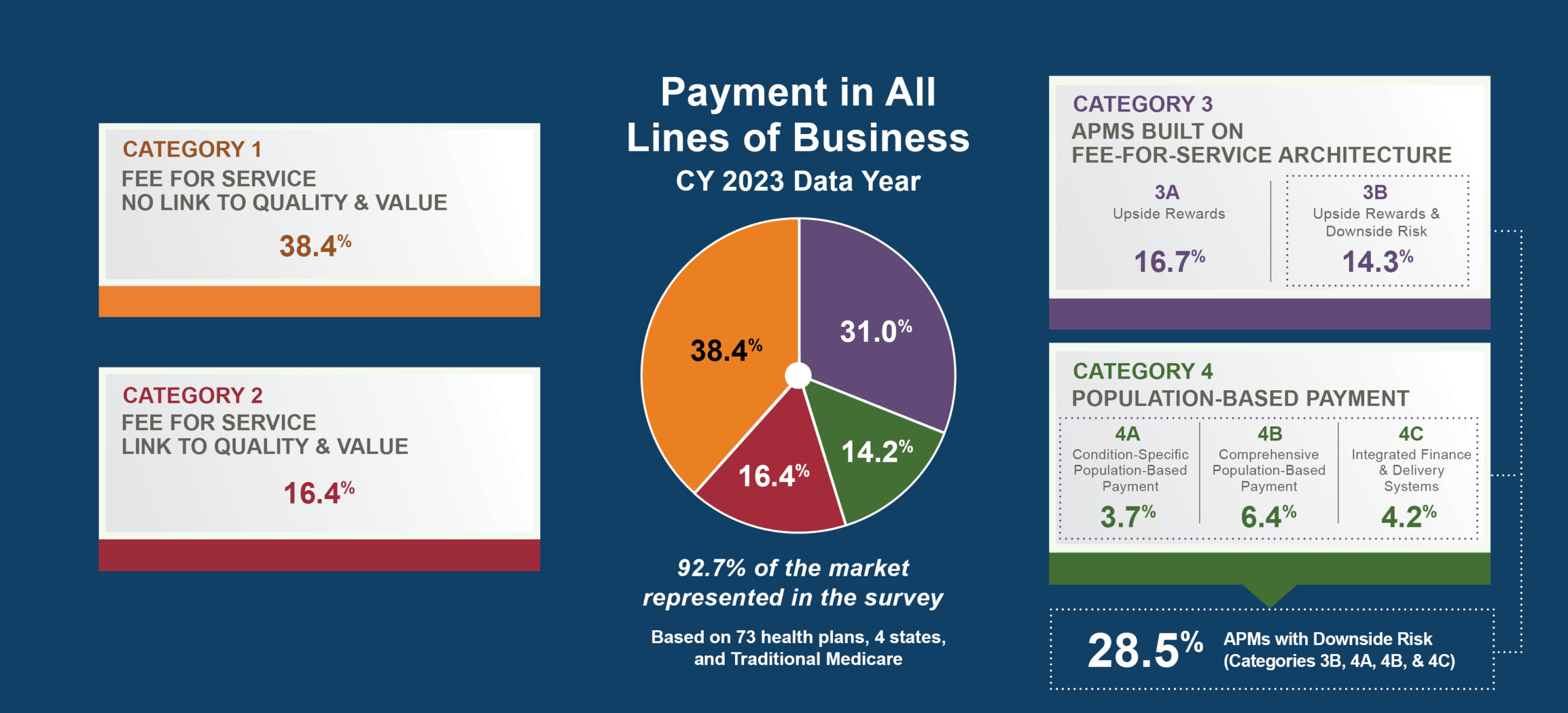

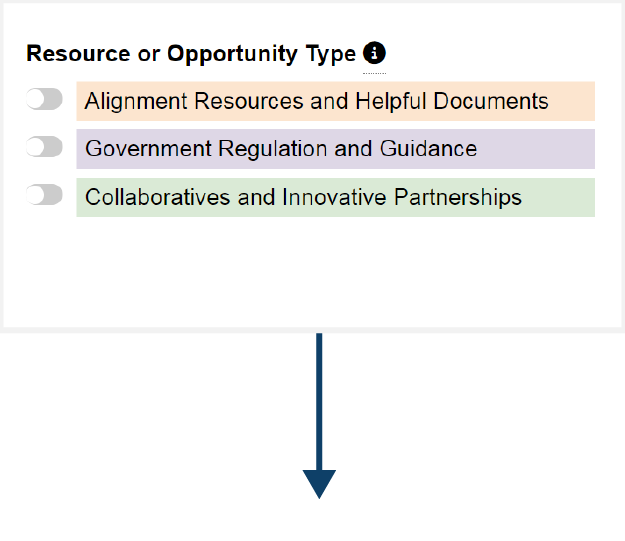
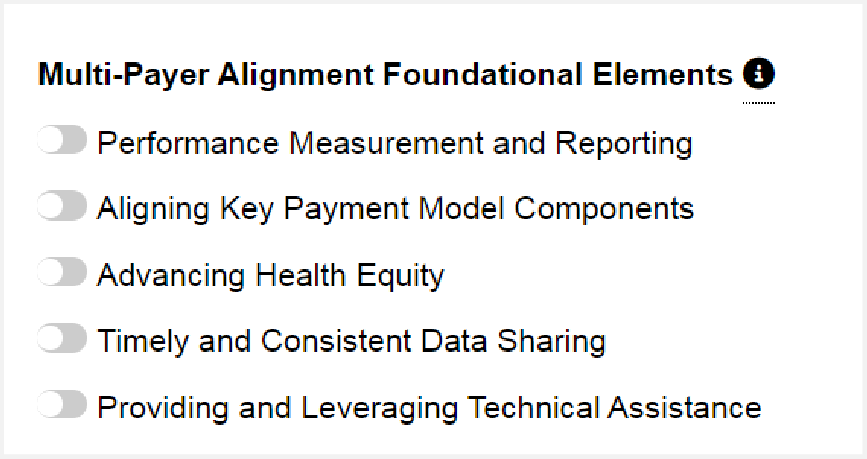




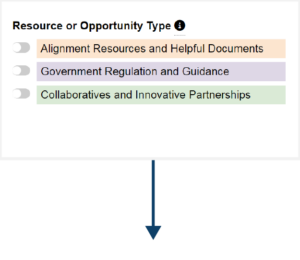

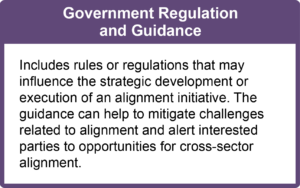
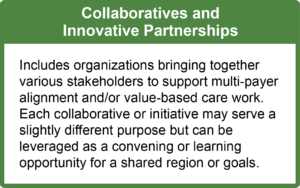
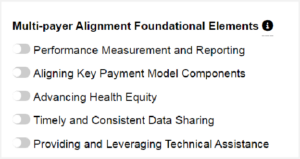




 Emily DuHamel Brower, M.B.A., is senior vice president of clinical integration and physician services for Trinity Health. Emphasizing clinical integration and payment model transformation, Ms. Brower provides strategic direction related to the evolving accountable healthcare environment with strong results. Her team is currently accountable for $10.4B of medical expense for 1.6M lives in Medicare Accountable Care Organizations (ACOs), Medicare Advantage, and Medicaid and Commercial Alternative Payment Models.
Emily DuHamel Brower, M.B.A., is senior vice president of clinical integration and physician services for Trinity Health. Emphasizing clinical integration and payment model transformation, Ms. Brower provides strategic direction related to the evolving accountable healthcare environment with strong results. Her team is currently accountable for $10.4B of medical expense for 1.6M lives in Medicare Accountable Care Organizations (ACOs), Medicare Advantage, and Medicaid and Commercial Alternative Payment Models. Mr. James Sinkoff is the Deputy Executive Officer and Chief Financial Officer for Sun River Health (formerly known as Hudson River HealthCare), and the Chief Executive Officer of Solutions 4 Community Health (S4CH); an MSO serving FQHCs and private physician practices.
Mr. James Sinkoff is the Deputy Executive Officer and Chief Financial Officer for Sun River Health (formerly known as Hudson River HealthCare), and the Chief Executive Officer of Solutions 4 Community Health (S4CH); an MSO serving FQHCs and private physician practices. Victor is the Chief Medical Officer for TennCare, Tennessee’s Medicaid Agency. At TennCare, Victor leads the medical office to ensure quality and effective delivery of medical, pharmacy, and dental services to its members. He also leads TennCare’s opioid epidemic strategy, social determinants of health, and practice transformation initiatives across the agency. Prior to joining TennCare, Victor worked at Evolent Health supporting value-based population health care delivery. In 2013, Victor served as a White House Fellow to the Secretary of Health and Human Services. Victor completed his Internal Medicine Residency at Emory University still practices clinically as an internist in the Veteran’s Affairs Health System.
Victor is the Chief Medical Officer for TennCare, Tennessee’s Medicaid Agency. At TennCare, Victor leads the medical office to ensure quality and effective delivery of medical, pharmacy, and dental services to its members. He also leads TennCare’s opioid epidemic strategy, social determinants of health, and practice transformation initiatives across the agency. Prior to joining TennCare, Victor worked at Evolent Health supporting value-based population health care delivery. In 2013, Victor served as a White House Fellow to the Secretary of Health and Human Services. Victor completed his Internal Medicine Residency at Emory University still practices clinically as an internist in the Veteran’s Affairs Health System. Dr. Brandon G. Wilson, DrPH, MHA (he, him, his) joined Community Catalyst as the Director of the Center for Consumer Engagement in Health Innovation, where he leads the Center in bringing the community’s experience to the forefront of health systems transformation and health reform efforts, in order to deliver better care, better value and better health for every community, particularly vulnerable and historically underserved populations. The Center works directly with community advocates around the country to increase the skills and power they have to establish an effective voice at all levels of the health care system. The Center collaborates with innovative health plans, hospitals and providers to incorporate communities and their lived experience into the design of systems of care. The Center also works with state and federal policymakers to spur change that makes the health system more responsive to communities. And it provides consulting services to health plans, provider groups and other health care organizations to help them create meaningful structures for engagement with their communities.
Dr. Brandon G. Wilson, DrPH, MHA (he, him, his) joined Community Catalyst as the Director of the Center for Consumer Engagement in Health Innovation, where he leads the Center in bringing the community’s experience to the forefront of health systems transformation and health reform efforts, in order to deliver better care, better value and better health for every community, particularly vulnerable and historically underserved populations. The Center works directly with community advocates around the country to increase the skills and power they have to establish an effective voice at all levels of the health care system. The Center collaborates with innovative health plans, hospitals and providers to incorporate communities and their lived experience into the design of systems of care. The Center also works with state and federal policymakers to spur change that makes the health system more responsive to communities. And it provides consulting services to health plans, provider groups and other health care organizations to help them create meaningful structures for engagement with their communities. Tamara Ward is the SVP of Insurance Business Operations at Oscar Health, where she leads the National Network Contracting Strategy and Market Expansion & Readiness. Prior to Oscar she served as VP of Managed Care & Network Operations at TriHealth in Southwest Ohio. With over 15 years of progressive health care experience, she has been instrumental driving collaborative payer provider strategies, improving insurance operations, and building high value networks through her various roles with UHC and other large provider health systems. Her breadth and depth of experience and interest-based approach has allowed her to have success solving some of the most complex issues our industry faces today. Tam is passionate about driving change for marginalized communities, developing Oscar’s Culturally Competent Care Program- reducing healthcare disparities and improving access for the underserved population. Tamara holds a B.A. from the University of Cincinnati’s and M.B.A from Miami University.
Tamara Ward is the SVP of Insurance Business Operations at Oscar Health, where she leads the National Network Contracting Strategy and Market Expansion & Readiness. Prior to Oscar she served as VP of Managed Care & Network Operations at TriHealth in Southwest Ohio. With over 15 years of progressive health care experience, she has been instrumental driving collaborative payer provider strategies, improving insurance operations, and building high value networks through her various roles with UHC and other large provider health systems. Her breadth and depth of experience and interest-based approach has allowed her to have success solving some of the most complex issues our industry faces today. Tam is passionate about driving change for marginalized communities, developing Oscar’s Culturally Competent Care Program- reducing healthcare disparities and improving access for the underserved population. Tamara holds a B.A. from the University of Cincinnati’s and M.B.A from Miami University.


 Dr. Peter Walsh joined the Colorado Department of Health Care Policy and Financing as the Chief Medical Officer on December 1, 2020. Prior to joining HCPF, Dr. Walsh served as a Hospital Field Representative/Surveyor at the Joint Commission, headquartered in Oakbrook Terrace, Illinois.
Dr. Peter Walsh joined the Colorado Department of Health Care Policy and Financing as the Chief Medical Officer on December 1, 2020. Prior to joining HCPF, Dr. Walsh served as a Hospital Field Representative/Surveyor at the Joint Commission, headquartered in Oakbrook Terrace, Illinois.








